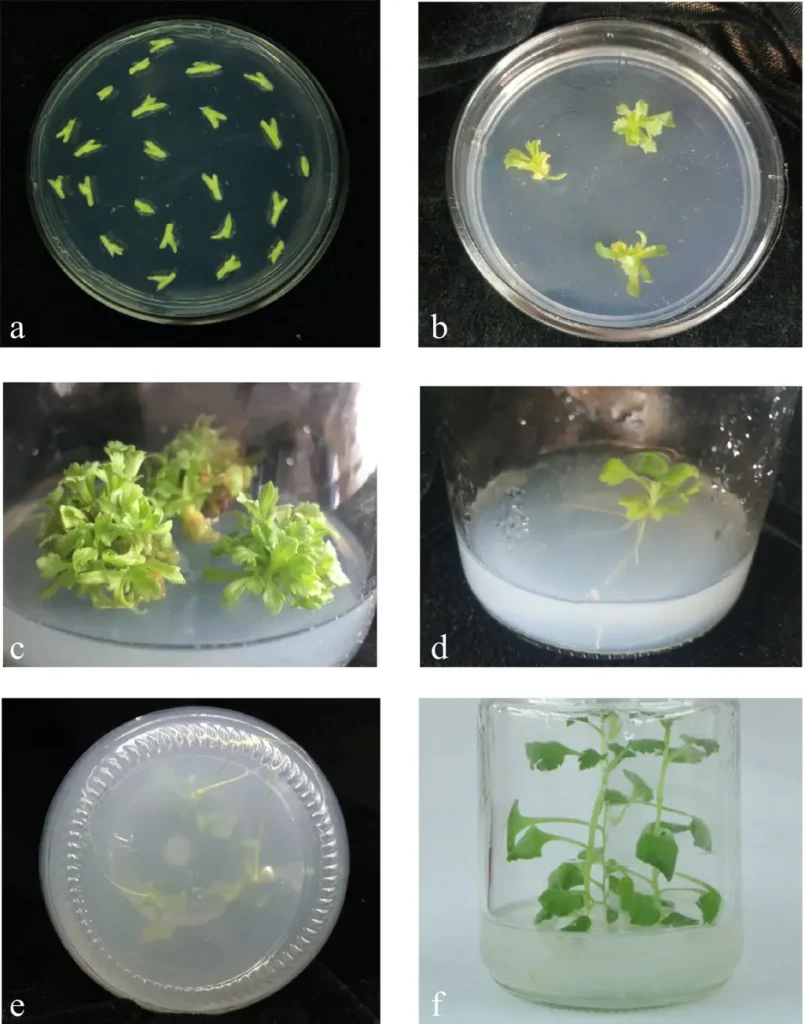In the heart of China’s Yunnan province, a groundbreaking study led by Chunmei Lu from the College of Agriculture and Life Sciences at Kunming University is set to revolutionize the chrysanthemum industry. The research, published in the journal *Frontiers in Plant Science* (translated as “Plant Science Frontiers”), focuses on the rooting promotion of chrysanthemum cuttings using a bacterium called Massilia consociata strain KC 009. This discovery could significantly impact the commercial cultivation of chrysanthemums, a multi-billion-dollar global industry.
Chrysanthemum cultivation often faces challenges due to continuous cropping, which reduces the rooting rate and quality of cuttings. This not only hampers the growth of the plants but also affects the overall productivity and profitability of the industry. Lu and her team have found a promising solution to this problem. “Our study provides the first evidence that Massilia consociata enhances root formation in chrysanthemum cuttings,” Lu explained. “This could be a game-changer for the industry.”
The researchers conducted pot experiments and analyzed the physiological indicators and endophytic microbial composition of the chrysanthemum cuttings. After treating the cuttings with KC 009 fermentation for 21 days, they observed a significant increase in the rooting rate, root number, root length, and root dry weight. The improvements ranged from 28.97% to 50%, a substantial boost for any commercial grower.
The study also delved into the physiological changes induced by KC 009. They found that the treatment significantly enhanced various physiological indicators, including soluble protein, soluble sugar, chlorophyll, and indole-3-acetic acid (IAA). Correlation analysis revealed that soluble protein was the most critical physiological factor contributing to root formation. “This is a crucial finding,” Lu noted. “Understanding the role of soluble protein can help us develop more targeted strategies for improving rooting in chrysanthemum cuttings.”
The researchers also examined the endophytic microbial composition of the chrysanthemum cuttings. They discovered that KC 009 significantly reduced the richness and diversity of endophytic microorganisms. The dominant endophytic bacteria changed from Ochrobactrum to Chryseobacterium and Alcaligenes, both of which are known to produce IAA and enhance plant stress resistance. “This shift in microbial composition is fascinating,” Lu said. “It opens up new avenues for exploring the role of endophytic bacteria in plant growth and development.”
The study also found that the abundance of Cladosporium, a potential pathogen in endophytic fungi, decreased by 16.70%. This is a positive development, as reducing the presence of pathogens can improve plant health and productivity. Functional prediction of endophytic bacteria revealed that the abundance of 14 metabolic pathways related to plant growth was significantly increased. This suggests that KC 009 not only promotes rooting but also enhances the overall growth and health of the plants.
The implications of this research are far-reaching. For the chrysanthemum industry, this discovery could lead to increased productivity and profitability. For the scientific community, it opens up new areas of research into the role of endophytic bacteria in plant growth and development. As Lu put it, “This study provides theoretical and practical references for promoting the rooting of chrysanthemum cuttings, holding significant importance for the development of the chrysanthemum industry.”
In the broader context, this research could also have implications for other crops facing similar challenges. The use of beneficial bacteria to enhance plant growth and health is an emerging field with immense potential. As we strive to feed a growing global population in a sustainable manner, such innovations will be crucial. This study, published in *Frontiers in Plant Science*, is a significant step in that direction.

